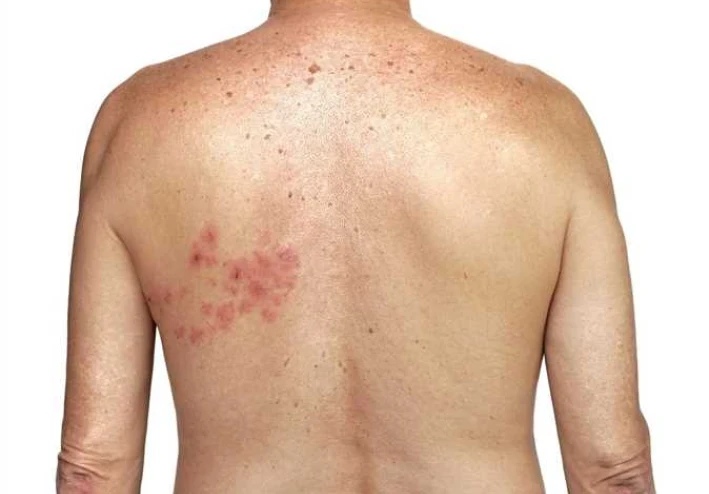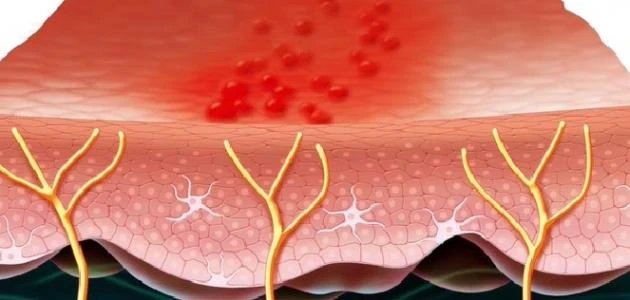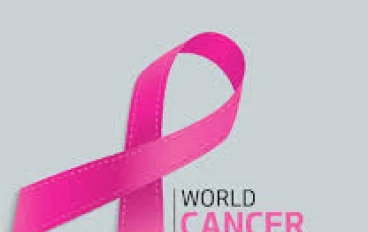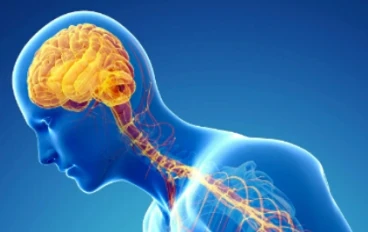
Shingles: A hidden pain that may haunt you after childhood chickenpox
Herpes Zoster (Shingles): A Hidden Pain That May Follow You After Childhood Chickenpox

This condition may begin as itching or redness of the skin, which you might think is an allergy or irritation from clothing. Within days, small blisters appear, and you assume it must be eczema.
But the blisters grow larger, turn red, and the pain becomes more intense.
At that point, you realize it is shingles, known in some Arab countries as “Zona,” “Herpes Zoster,” or “Herpes Shingles.” This illness is not just a skin condition; it carries nerve pain that can worsen over time and disrupt sleep and daily life.
I am Dr. Abdel Hamid Hamad, a consultant and international expert in nerve pain management with over 30 years of experience. I have helped thousands of patients understand, manage, and overcome this pain. In this article, I will cover everything related to shingles: from the reasons behind the virus reactivation, to its symptoms, and the latest scientific treatments—both medical and interventional—along with practical tips to reduce pain and restore normal life.
What is shingles?

Shingles is the reactivation of the dormant Varicella Zoster Virus—the virus that causes chickenpox, which typically infects humans during childhood. After the skin heals, the virus does not die; instead, it hides silently in the nerve roots and ganglia without disturbing the person.
With aging, weakened immunity, or severe psychological stress, the virus may find an opportunity to reactivate, traveling along the nerves to the skin, causing the appearance of painful red blisters.
This disease usually affects people over the age of 50 and occurs in approximately 20% of those previously infected with chickenpox, meaning one in five people. The most commonly affected nerves are the thoracic nerves (T1–T12). However, the most dangerous location can be when the trigeminal nerve (cranial nerve V) is affected, due to the risk posed to the eye and vision. This occurs in 15–20% of facial cases.
Post-Herpetic Neuralgia (PHN)
Not long after the skin blisters heal, the pain may persist in some patients, marking the beginning of severe suffering. This type of pain is called Post-Herpetic Neuralgia (PHN), a chronic neuropathic pain that lasts three months or more due to nerve injury and irritation.
Characteristics of this pain include:
Burning, stabbing (like a knife), or intermittent electric-shock sensations
Pain that is continuous or occurs in episodes
Increased sensitivity of the skin to touch—clothing or bathing may become painful, severely affecting the patient’s quality of life
The suffering is compounded when sleep difficulties and mood disturbances occur.
This is not surprising, considering that wearing a bra, a T-shirt, or even a simple movement can ignite severe pain in the skin…
And this is exactly what I see and hear from patients who visit the clinic.
A story from the clinic

I remember a patient, “Sarah,” in her fifties, who came to me barely able to sleep. The skin blisters on her chest had disappeared, but the pain felt like walking on glass every night, and every slight touch reminded her of the suffering. We started a comprehensive treatment plan, which included nerve medications, lidocaine patches, and transcutaneous electrical nerve stimulation (TENS). Today, after months of follow-up, she is able to sleep regularly and has regained her social life.
Diagnosis of Neuropathic Pain
To determine if the pain is caused by Post-Herpetic Neuralgia (PHN), we use reliable assessment tools such as DN4, which provide the doctor with a precise and objective diagnosis and help design a personalized treatment plan for each patient.
Treatment: Step by Step
1. Prevention: The First Stage
The most important factor is preventing the development of PHN. This is achieved by administering antiviral medications early and at high doses, especially within the first 72 hours of symptom onset, which significantly reduces the severity of later pain.
Acyclovir and Valacyclovir are the most effective medications.
Important note: Routine use of corticosteroids is not scientifically recommended.
2. Neuropathic Medications
If the pain persists, we resort to specialized drugs:
GABA medications (Gabapentin or Pregabalin): inhibit nerve overactivity
Tricyclic antidepressants (Amitriptyline, Nortriptyline)
Selective norepinephrine reuptake inhibitors (Duloxetine)
These medications are effective but may cause side effects, especially in older adults, so careful monitoring is necessary.
Supplements and vitamins that nourish the nerves can also be added to enhance recovery.
3. Topical Treatments
5% Lidocaine patches: relieve pain within 30 minutes
Capsaicin: derived from chili peppers, used to reduce skin sensitivity; concentrations vary according to patient tolerance
These treatments gradually desensitize the skin, providing noticeable relief with continued therapy.
4. Interventional Treatments
Interventional procedures are the cornerstone in difficult cases:
TENS (Therapeutic Electrical Nerve Stimulation): delivers mild electrical pulses to stimulate nerves and reduce pain; can be used at home
Triamcinolone injections with local anesthetic: effectively reduce inflammation and pain
Botulinum Toxin A injections: commonly known as Botox, proven highly effective in relieving PHN pain, improving sleep, and reducing opioid use
Studies show the effect of Botox injections begins after 7 days and lasts for about three months, significantly reducing pain and improving quality of life.
Another Clinic Story
Another patient, “Ahmed,” developed shingles after age 60, and the pain persisted for over a year, causing very little sleep and psychological distress. Using a multimodal approach—nerve medications, topical patches, and TENS—he gradually improved. After a Botox injection session, he described it as:
"The pain gradually eased until the sensation of pins and needles disappeared from my skin."
These cases show that PHN is not the end, and normal life can be restored with proper management.
Additional Tips
Dr. Berg, a well-known figure, suggested a deep massage technique on the opposite side of the body as an experimental method to relieve pain. Some patients reported noticeable improvement without side effects.
Summary
Shingles is a reactivation of the Varicella Zoster Virus, affecting the nerves and causing painful skin blisters, sometimes leading to chronic neuropathic pain (PHN).
The first step in treatment is early prevention using antiviral medications.
This is followed by a personalized treatment plan including nerve medications, topical therapies, and interventional procedures in a multidisciplinary approach.
Early and comprehensive management can prevent chronic pain, improve sleep, and restore daily life control.
Call to the Reader
If you ever experience similar symptoms, or know someone who does, don’t wait. Contact your doctor and start early treatment. Pain is manageable, and quality of life is restorable.
Share this information with your loved ones; it might be a key to hope for someone else.
Remember: Knowledge is power, and understanding is the path to recovery.
Important Links:
Shingles, Zoster, Herpes Zoster, Post-Herpetic Neuralgia (PHN)
Secondary Keywords: Varicella virus, chickenpox, neuropathic pain treatment, Botox injections for pain, topical therapies, nerve medications, TENS, Capsaicin, Lidocaine, chronic pain
This article is written by Dr. Abdel Hamid Hamad, a world-renowned expert in pain management.
Published by Saleh Mohammed Saleh.


































